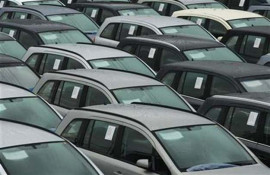
Middle-income countries have pursued regional trade agreements since the 1960s and these ties are becoming more important as the global economic crisis curtails demand from the United States and other major markets. With the Doha Round of multilateral trade talks stalled, regional trade agreements (RTAs) offer an alternative approach to increase trade, spur stronger economic growth, and lower unemployment rates in participating countries.
Three regions—Eastern Europe, Latin America, and East Asia—have had vastly different experiences with regional trade and enjoyed varied levels of success. With the financial turmoil, each now has opportunities to increase trade with neighbours and work toward a broader free trade system.
The future economic growth of Eastern European countries will depend largely on the European Union (EU), which received 80 per cent of Eastern Europe’s exported goods in 2008. To foster trade, the EU must implement policies that will gradually reduce fiscal deficits and help regain lost competitiveness. With solutions in place, regional trade can be a powerful engine for growth in the region.
Latin American countries also have a long but not very successful history of trying to integrate their economies and societies. Still, countries in the region are now in a relatively strong fiscal position following the financial crisis and have the opportunity to build on smaller trade agreements by ending burdensome administrative restrictions and tariffs and by coordinating investments in areas such as transportation, energy, and telecommunications.
East Asia’s outlook for regional trade is positive, given that its countries are quickly recovering from the economic crisis and enjoy a successful trading history. But with so many trade agreements signed both within the region and beyond, understanding the relevant rules for business and resolving disputes is difficult. All countries rightly regard regional trade as important for future economic growth, and Southeast Asia should significantly expand its trading bloc to include China, Japan, and South Korea—and possibly incorporate Australia, India, and New Zealand.
Pakistan has long been trying to get into Asean, but so far the response has been lukewarm, perhaps rightly so. It is because Pakistan does not fulfil a lot of the criteria that are considered essential for an RTA to work, and to benefit all the members.
Pursuing stronger regional trade agreements can help form the building blocks for global free trade deals. Increasing trade will not only help middle income economies develop but also drive growth around the world as the financial crisis recedes.
Conditions for RTAs to work
According to a recent report published by the Carnegie Endowment for International Peace the following conditions are essential for RTAs to work:
a. Regional trade agreements reach their full potential when the political and ideological differences among participating countries are minimal.
b. Trade deals work best when member states coordinate monetary and fiscal policies. In fact, uncoordinated fiscal policies in the European Union framework are responsible for current financial turmoil in the region, with a negative impact on trade.
c. Bottom-up approaches, in which companies develop supply chains across borders, are more effective in facilitating regional integration than are top-down approaches imposed by governments.
d. Agreements on trade and investment norms—including reducing transportation costs through coordinated efforts to improve the quality of infrastructure—can significantly boost intra-regional trade.
e. Countries must achieve better balance between fiscal stimulus and financial solvency to reinvigorate regional trade agreements. former increases public debt to levels that might threaten financial stability. Countries also must address concerns over consistency in exchange rates policies. The coexistence of fixed exchange rates with free floating rates, as in the euro zone, creates imbalances in trade.
f. Ambitious goals for trade deals are easier to achieve when negotiations proceed among countries that embrace the benefits of globalisation, meaning those that have been willing to unilaterally open to trade, or have actively supported multilateral trade liberalisation.
Published in The Express Tribune, February 4th, 2013.
Like Business on Facebook to stay informed and join in the conversation.


















COMMENTS
Comments are moderated and generally will be posted if they are on-topic and not abusive.
For more information, please see our Comments FAQ